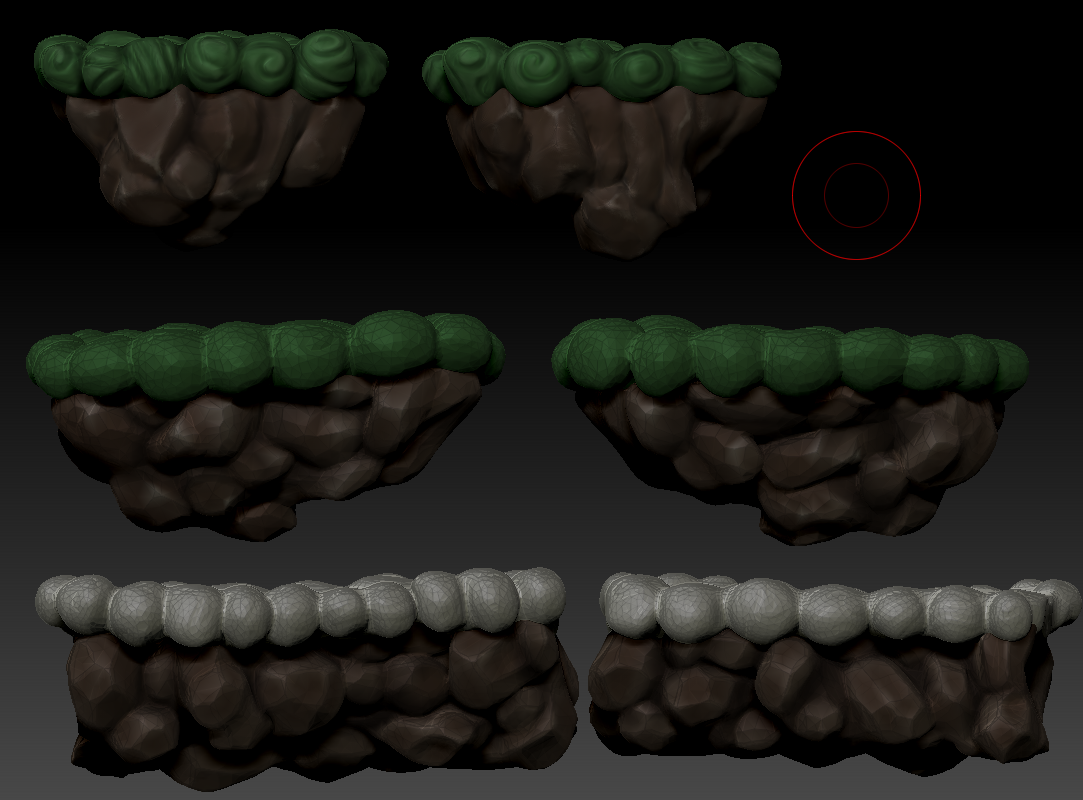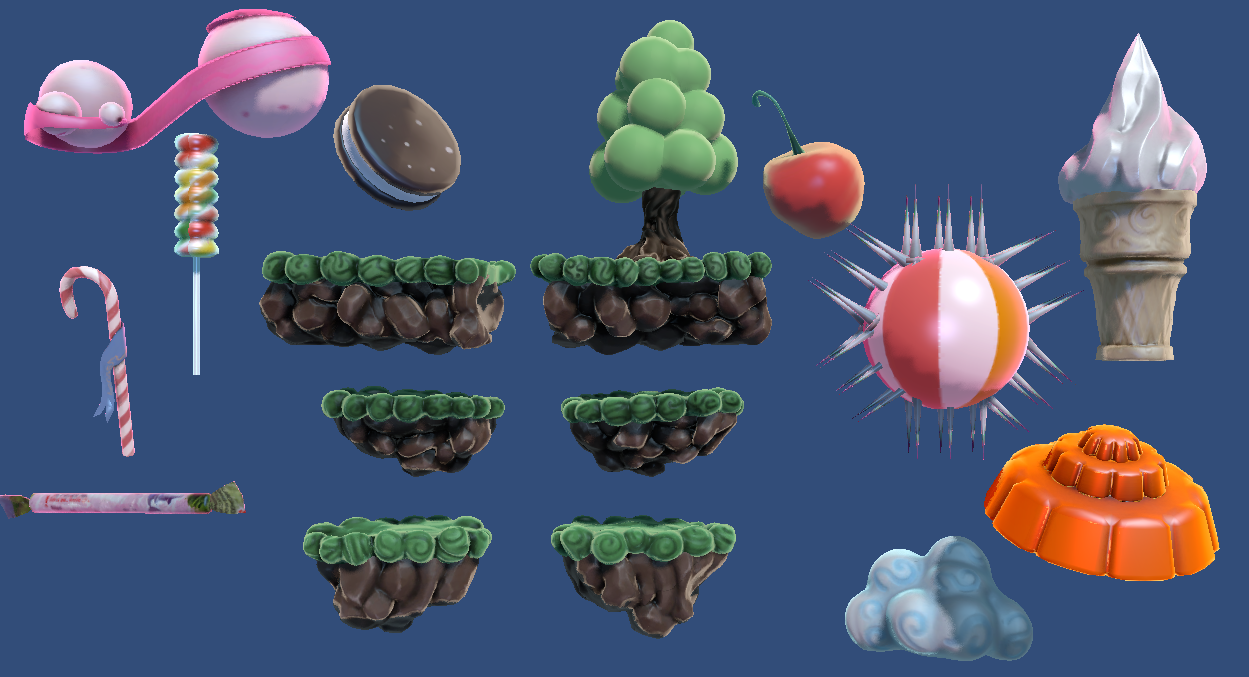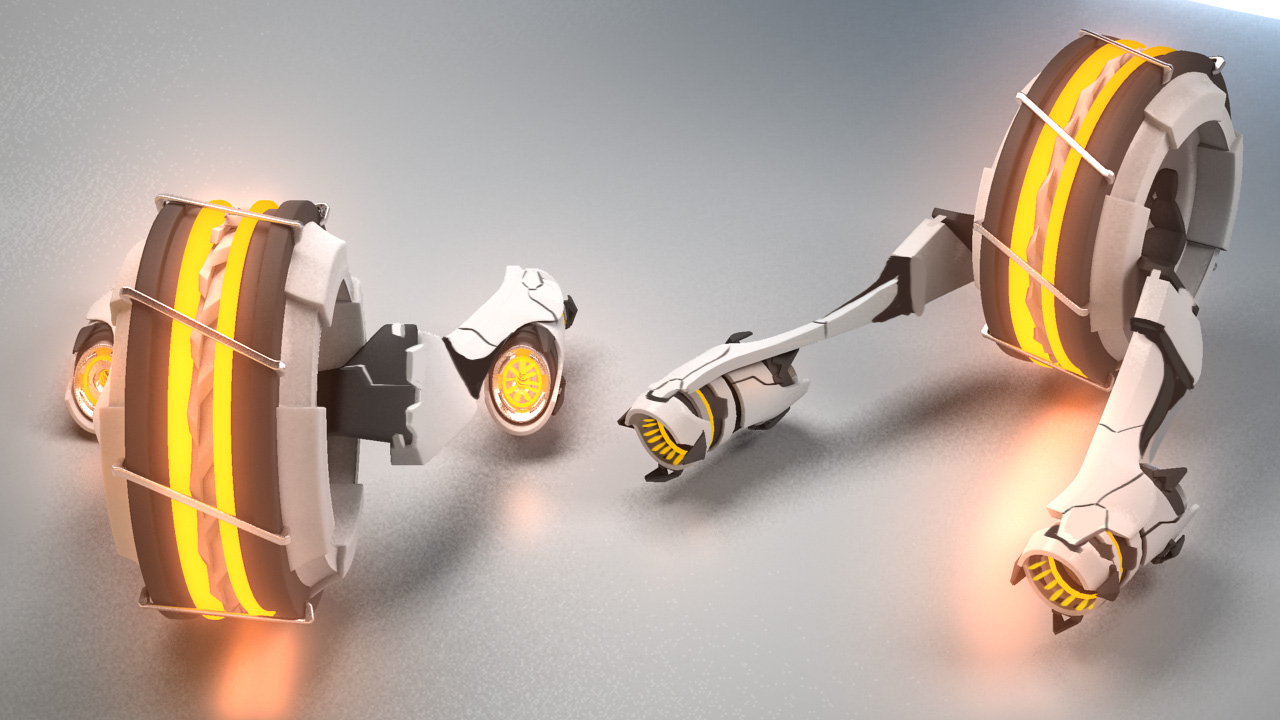Around 2012, while finishing my Software Engineering degree at Instituto Tecnológico de Buenos Aires, I worked on a couple of graphics-related projects that were a lot of fun. These projects solidified my interest in graphics, gamedev and what would later become AR/VR.
Candylicious
For ITBA’s game development class, I worked on a couple of simple game projects that got featured in the university’s technology fair. It was a great opportunity to work on both technical and art aspects of small games – I did all the art and wrote all the shaders for both (aside from some of the gameplay).
The main challenge was getting my custom shaders to feel “squishy” and cute, so it was a good lookdev exercise. It was mainly inspired by Team Fortress 2’s pyroland concept art and some of their technical decisions in their shading:

All the shaders used gradient mapping for their look with additional specular lobes for a bit of contrast. They are still pretty cute in my opinion, so I’ll share some WIP art and gameplay.
Low poly versions of the platforms inside ZBrush. A nice advantage of being a sidescroller is that a single platform has 2 sides and can be reused much more:


Hexatron
Another very similar project to Candylicious was a Tron clone, where we wanted to translate the classic gameplay to a more vertical scenario. I built all the art, shaders/fx and implemented the dynamic trail, which was a harder-than-expected challenge due to the dynamic mesh generation. At that time, Unity didn’t have good mesh trails, so we basically had to built one from scratch.
We built it in two weeks. The main menu was also pretty fun to build:


ArsMobilis
Around the time the first Kinect was announced, I was taking an exploratory art&sciences class where I was able to experiment with one. I built a hand driven Paint-like application, leveraging Kinect’s body tracking using a specific distance to the device as input threshold – this also allowed using the hand as an input for any kind of application.
The project got featured by the university, and considering that it was my first foray into alternative HCI inputs it motivated me into experimenting with early VR when the first Oculus devkit came out.